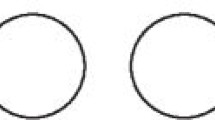Abstract
Data sources Five electronic databases were searched: COVID-19 Open Research Dataset (CORD-19-2020); PubMed; MEDLINE; Scopus; and Google Scholar.
Study selection Titles of articles and abstracts were identified during the electronic database searches and then screened for relevance. Publications up until the date of the literature search, 19th March 2020, were used. All articles with the appropriate topics pertaining to COVID-19, dentistry, orthodontics, and infection control were used irrespective of language. The author did not state whether they were selective about the study type or design of articles screened. References of these articles were also screened, via the 'snowballing technique', to obtain as much relevant literature as possible.
Data extraction and synthesis Articles were reviewed by the cited author, and one research assistant. Data was extracted from each study by this author. The data obtained was combined and discussed narratively, in a qualitative manner. Due to the broad scope of studies included, it was not possible to conduct a meta-analysis.
Results This literature review describes ways to reduce COVID-19 transmission in orthodontic practice. Overview of the literature discusses how the virus may be transmitted in the orthodontic setting: by human-human contact; saliva; aerosols; and use of orthodontic instruments. The literature review illustrates the need for optimum infection control and strict cleaning, detailing surface disinfection and sterilisation protocols. It highlights the need for optimal hand hygiene, use of high standard personal protective equipment, controlling aerosol use, appropriate ventilation, and treating emergency cases only.
Conclusions While there are no known cases of COVID-19 cross-transmission within the dental setting currently reported, utmost vigilance is required by orthodontic professionals to reduce risk of transmission. The review reinforces crucial measures required to reduce infection, as outlined in the Results section above. While the virus is still emerging, knowledge is limited and as such it is difficult to provide robust and complete recommendations for best practice. Further studies to inform future practice are required.
Similar content being viewed by others
A commentary on
Turkistani K A.
Precautions and recommendations for orthodontic settings during the COVID-19 outbreak: A review. Am J Orthod Dentofacial Orthop 2020 DOI: 10.1016/j.ajodo.2020.04.016.

GRADE rating
Commentary
The dental world is united in its battle against COVID-19 and its efforts to safely provide dental care during this health crisis.
This literature review addressed a significant clinical issue, and stated clear objectives to provide: (i) further knowledge on COVID-19 infection; and (ii) risks and recommendations in providing orthodontic care during the outbreak.1 These objectives are particularly important given that we do not know how long this virus will remain a threat.
A comprehensive review of the literature was undertaken, but this did not include a detailed search strategy. No inclusion or exclusion criteria are stated. It is not clear whether the author and research assistant screened the literature independently.
Crucially, the review included non-English language studies. This is particularly important given that the virus emerged earlier in certain countries. As such, practitioners in these countries were able to gain an earlier understanding of how to deal with COVID-19 (past the peak). The scientific quality and characteristics of the included studies were not assessed or reported. The author did not state how many articles were included, which would have been of interest.
The literature overview and conclusions were clear and well structured. The risk of disease transmission in the orthodontic surgery was discussed, highlighting the high proportion of children that make up the orthodontic patient demographic. The role of children as 'asymptomatic carriers' is still unknown, and may pose a potential elevated threat.1 The review highlights sources of contamination such as saliva, aerosol procedures, orthodontic instruments including wires/bands/chains. An obvious conclusion was reached that equipment would be a risk if not properly sterilised. Given the strict infection control standards in most countries (such as HTM 01-05 in the UK),2 this recommendation will not be ground-breaking for most practitioners.
The results were formatted as a discussion, with a summary of studies to give practical tips for providing limited orthodontic care while minimising risk of virus transmission. Recommendations are as follows: postponing routine appointments; screening patients; restriction of aerosols; detail on personal protective equipment; ventilation of clinics with air-filters or high airflow; hand hygiene; strict surface disinfection; equipment sterilisation measures; and all clinical waste being handled as infectious waste.1
The credibility of some recommendations is questionable. While the author advises the use of chlorhexidine 0.12-0.2% before procedures to reduce the risk of COVID-19 transmission, this contradicts other literature,3,4 which advised use of 1% hydrogen peroxide or 0.2% povidone mouth-rinse instead of chlorhexidine (which was deemed ineffective against COVID-19).
Orthodontic treatment involves aerosol generating procedures throughout,4 and when required use of rubber dam is not possible. The author described a study that found COVID-19 was viable for three hours in aerosols. However, the author did not provide any practical recommendations regarding this. It would have been useful, for example, for the author to explain how long a surgery should be cleared post aerosol procedure until it is safe to reuse.
It is important to note that as this is a literature review and not a systematic review there is no data analysis or specific quantitative results presented. The review is a descriptive summary of the current and emerging literature. The author makes general recommendations for practice, with little explanation of the supporting evidence, other than reference to articles for further reading.
The guidance may not provide new information to the engaged practitioner as many of these are basic recommendations, which are published and already implemented in the international dental community whose restrictions are being lifted.5 This review may have already been superseded by other papers, which offer more detailed practical points for practice re-openings.5,6,7
For those who have read limited literature regarding COVID-19 and dental care, this provides a good overview. The author provides a wealth of literature resources for further reading via the reference list.
The author did not consider limitations of the review, but did highlight this is an emerging virus of which the global community has limited understanding. Conclusions were clear and concise, and were justified by the literature review. The recommendations do not explore how routine and non-urgent orthodontic care will be provided.
The author acknowledged more studies are required to further inform orthodontic treatment and reduce risk of COVID-19 cross-transmission. A suggested research topic of interest was whether clear aligners that require minimal appointments may be superior to fixed orthodontics during the pandemic.
References
Turkistani K A. Precautions and recommendations for orthodontic settings during the COVID-19 outbreak: A review. Am J Orthod Dentofacial Orthop 2020 DOI: 10.1016/j.ajodo.2020.04.016.
Department of Health. 2013. Decontamination: Health Technical Memorandum 0105Decontamination in primary care dental practices. 2013, UK.
Peng, X, Xu, X, Li Y. et al. Transmission routes of 2019-nCoV and controls in dental practice. Int J Oral Sci 2020; 12: DOI: 10.1038/s41368-020-0075-9.
British Orthodontic Society. AGP and NON-AGP in Orthodontic Procedures. 2020. Available at https://www.bos.org.uk/Portals/0/Public/docs/Advice%20Sheets/COVID19%20FACTSHEETS/Recovery%20Phase%20Advice/AGP/Table%20of%20AGP-Non%20AGP%20v7.pdf (accessed May 2020).
Izzetti, R, Nisi, M, Gabriele M., Graziani F. COVID-19 Transmission in Dental Practice: Brief Review of Preventive Measures in Italy. J Dent Res 2020; DOI: 10.1177/0022034520920580.
COVID-19 Dental Services Evidence Review (CoDER) Working Group. Recommendations for the re-opening of dental services: a rapid review of international sources Version 1.3. 2020. Available at https://oralhealth.cochrane.org/sites/oralhealth.cochrane.org/files/public/uploads/covid19_dental_review_16_may_2020_update.pdf (accessed May 2020).
British Orthodontic Society. COVID-19 Recovery Guidance May 2020. Available at https://www.bos.org.uk/Portals/0/Public/docs/Advice%20Sheets/COVID19%20FACTSHEETS/Phase%202/Planning%20for%20re-opening.pdf (accessed May 2020).
Author information
Authors and Affiliations
Rights and permissions
About this article
Cite this article
Carter, A. Can orthodontic care be safely delivered during the COVID-19 pandemic? Recommendations from a literature review. Evid Based Dent 21, 66–67 (2020). https://doi.org/10.1038/s41432-020-0103-9
Published:
Issue Date:
DOI: https://doi.org/10.1038/s41432-020-0103-9



